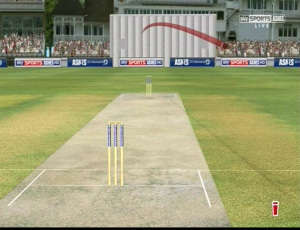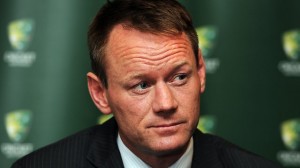
A gradual but inevitable descent into cricket-based loathing and bile.
The Worst Touring Party To Ever Visit English Shores
This Ashes series began with a lively debate over which past outfit the present tourists most accurately resembled. Claims of comparison between this mob and that of 1989 quickly proved about as wide of the mark as a Mitchell Starc special. The 1985 tourists have quickly emerged as the most likely candidates, although conclusions are still being withheld on account of the the fact that Allan Border’s team actually managed to win a Test. The point of all of this, of course, is to establish whether or not this current Ashes squad can be rightfully named the worst to ever visit English shores. Even after what happened at Lord’s that is still an open question. Australia won’t (can’t) be as bad again in the third Test, and with the weather set to play a prominent role over the next few weeks, the final equation might prove less one-sided than it might have otherwise. But while that debate is still yet to be resolved, there is one that can be already declared irrevocably settled. This is easily the worst pack of Australian journalists to ever cover an Ashes series.

The brown bit in the middle represents common sense, the red line the average journo’s opinion.
The defeat at Lord’s brought about a pitiful wave of hyperbole mixed with self-anguish from a group of journalists who really ought to know better. Only a week after the fighting defeat in the first Test, and the emergence of Ashton Agar, Australian cricket was effectively pronounced as being at death’s door; at best condemned to decades of suffering at the hands of English opposition on it, and insufferable arrogance of it (it’s already started actually; just listen to our last podcast). The general consensus was that in the interim everyone should just pack it in, let the Poms have their fun, and wait for the next Steve Waugh to magically emerge before jumping back on the bandwagon. Meanwhile we could all get behind such traditional bastions of Australian sporting prowess such as, um, women’s hurdles. But the amount of reactionary rubbish (Australia really isn’t that bad) written across the land wasn’t nearly the worst of it.
The hot topic of the past week in the Australian media ranks has been domestic cricket. It’s as if all of a sudden cricket journalists have woken up and realised that not only does the Sheffield Shield still exist, but that it’s also a bit shit these days. Everyone (including us) agreed that the main culprit behind it’s demise is the rubbish pitches endemic in the competition. Usman Khawaja and Matt Wade backed up their claims, before the action man of Cricket Australia, Pat Howard, jumped onto the scene and confirmed that everyone needn’t worry because he was on the case and would have things back in working order before you know it. Nobody can claim Howard is only ‘sometimes’ on the job. But before journalists can start patting themselves on the back and passing round congratulatory tweets for having successfully averted a crisis in Australian cricket, there is a deeper issue to consider. And no, we don’t mean the inevitable degradation of Australian pitches as a consequence of them calling up their groundsmen to bowl off-spin in the Test team (or to sit in the dressing room sobbing, whilst an 18-year old bowls the overs that were rightfully yours).

Your average Sheffield Shield pitch.
Pitches don’t suddenly become rubbish overnight (well, they do if the WACA groundstaff has been drinking on them, but that’s another story), in the same way that an entire generation of batsmen don’t suddenly forget how to play a forward defensive stroke effectively. In the beginning of 2011 Cricket Australia CEO James Sutherland stated, and we quote, “I think we need to be very careful that we don’t err on the side of having pitches that are, I guess, prepared to deliver a result. The primary purpose of Sheffield Shield cricket is to develop cricketers for the international level, for Test cricket, so one of my concerns there is the playing conditions.” This was in response to concerns raised earlier in the season, by George Bailey, of ‘doctored’ pitches in Shield cricket. The Argus Review, released nearly 12 months later, confirmed these misgivings in highlighting the fact that Australian batsmen were consistently proving to be unable to cope with batting in Test match conditions.
None of this is intended to reflect badly on Sutherland’s performance as CEO of Cricket Australia. He is doing a good enough job of that on his own already. But these quotes were hardly off the record; they were recorded in articles on Cricket Australia’s own site, as well as on Cricinfo. And yet how many Australian journalists held Sutherland to account for his remarks? Shield pitches were already an issue in 2010/11, and have been getting progressively worse since, with last season representing perhaps an all-time low. In the wake of repeated batting collapses that stretch back over the past three or more years, how many journalists bothered to put two and two together and question just what Cricket Australia was doing to improve domestic pitches and thus give the batsmen a chance to build their innings? How many will now deride Pat Howard for closing the gate after the horse has bolted, when none of them bothered pressing him on this issue previously over his nearly two year tenure as General Manager of Team Performance?

Quick, everyone blame this guy! Booooooo!!!!
For the vast majority of Australian cricket journalists (with a few notable exceptions), their job essentially revolves around trawling through David Warner’s twitter account (or his brother’s), blaming all of Australia’s woes on T20 cricket, trying to get Ricky Ponting dumped from the international setup (a rare success there), talking up player X (usually Brad Hodge or Cameron White if the journalist is Victorian) as the savior of Australian cricket, or just generally bemoaning the fact that all their English colleagues are constantly mocking them these days. It was a sad, sad, day for Australian cricket when it took Shane Warne of all people to come out and highlight some of the structural flaws currently afflicting Australian cricket. But since the majority of Australian journalists are too busy looking the other way and pretending domestic cricket doesn’t exist, that’s pretty much where Australian cricket is at.
As someone far more literate than us once accurately pointed out, all that most Australian cricket journalists are interested in these days is bagging the players. Actually investigating the causes behind the current woes of Australian cricket seems to be a job beyond them. The end result is that Australian cricket journalists now have the Australian Test team they deserve.

1 Comment
Post a Comment
1
Dave
30 Jul 2013 01:10
Has 51allout done anything on whether Starc is the new Mitch Johnson? If not, you should!